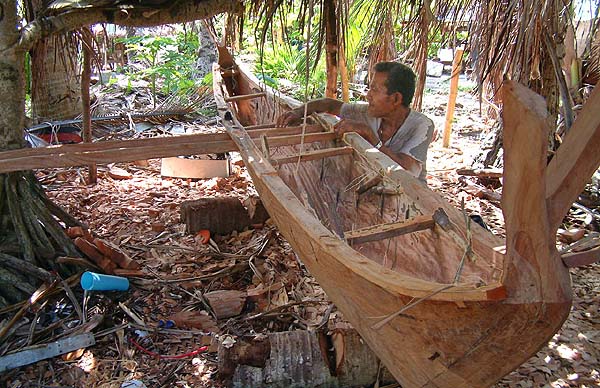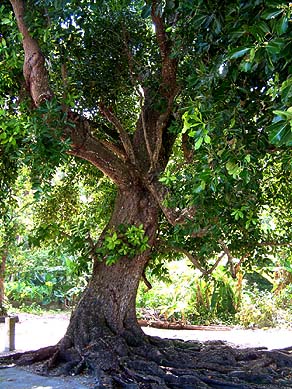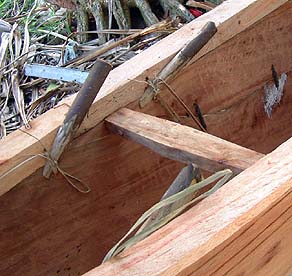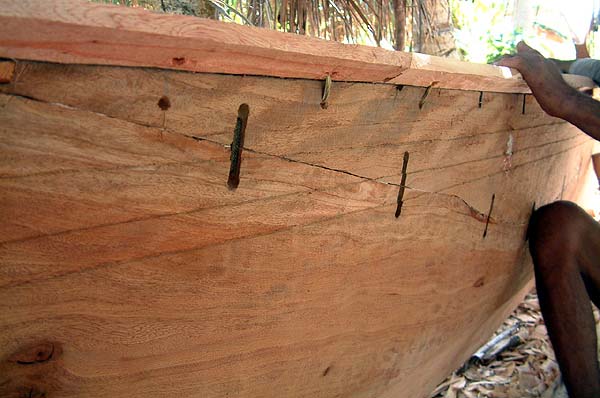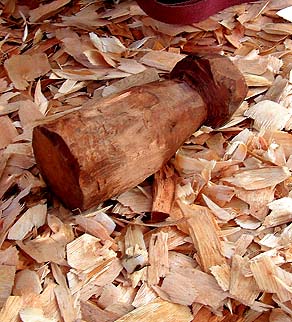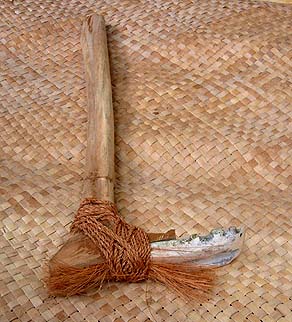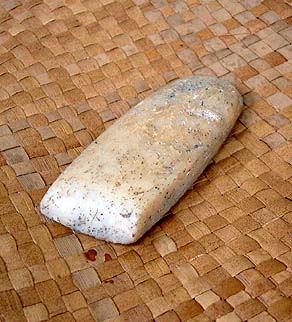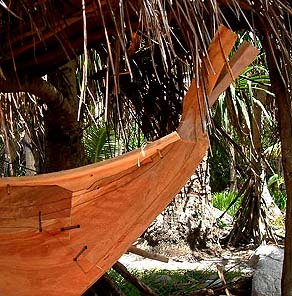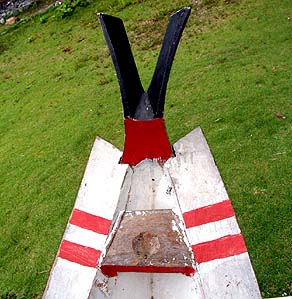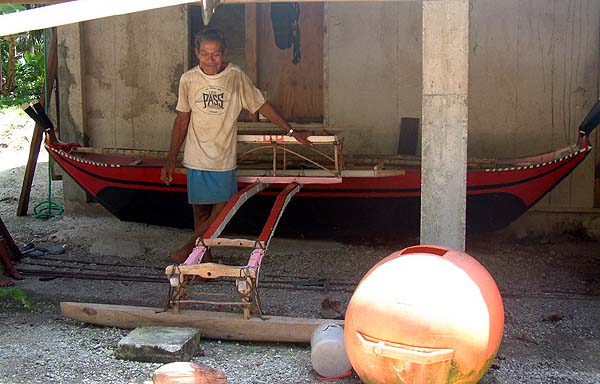| Canoe carving:
|
|
|
“I am interested in carving canoes," Daniel Dig says, "and I watched the old people doing that, and then I tried to imitate them. And now I’m a canoe builder. This knowledge probably originates from Yap. It was said that a Yapese man married into Euripik, this island close to Woleai,. He married there and he taught them how to carve the canoes the way they are still carving now. And their canoes are similar to ours. They are like the Yapese canoes. But the rest of the Woleai group, they are different."
|
||
|
|
||
“This canoe is made from mahogany. I don’t know about any ritual before cutting the tree. Maybe there was in the past, but nowadays, just choose the tree and cut it.” “I’ve never seen a special ceremony for cutting the tree” Chief Taithau notes, “but I think there must be one, because before carving it, we have to make the tree happy. So there must be some sort of ritual. You have to make a canoe happy so that it can catch more fish.” “First the hull is carved,” Daniel continues, “then the other pieces can come from other trees. Before, we’d get the sap from breadfruit trees to help fasten these. You collect the sap and you dry it, and it becomes hard, which can last very long."
|
|
|
"But when you’re ready to use it, to lay it in between these two pieces of the canoe hull to sort of glue them together, you heat it up and sort of melt it, and then you attach it to both sides. Then you put them together. Now, we’re using commercial glue, and commercial fiber. This commercial fiber is good because it lasts longer. “The wedge, you put up the wedge even before you put the glue in between the pieces. You put up the wedge to sort of hold these two pieces together and if you need to carve along here, where the two pieces meet, then the wedge is there to hold it in place. Then we have the final product out of each piece. Then I will take off that wedge again. I’ll put the glue and then wedge it again before I can use the rope to fasten them."
|
|
|
|
|
"And before these tools, in the old days they had to burn the tree, the log,layer by layer. And they scraped off the burned parts till they have a smaller, you can shape it into any form. But it’s mostly done by burning. The adze was made out of shells—conch and giant clam—which we sharpened on stones. Chip off a chunk and then shape it, and then take time to grind it on a stone. Probably they had to burn it." "This rock is for use as a sharpening stone. This is lava—pumice. It washes up on the shores. Almost every island you will find this kind lava along the shore. It probably comes over from Hawai‘i."
|
||
|
|
||
|
|
|
|
|
|
|
“The string will be replaced and then the lime mixed to caulk up there," Daniel says. “The lime comes from coral stones that you burn,” Mariano explains. “Burn the stones until they become powdery, then you mix it with water until it becomes like a clay or paste. That’s what you fill up these holes with. Then paint will be over it. "Now the lime stays there even though the paint wears off and the lime sticks in there, even where it’s touching the sea water. Before, when there was no paint, commercial paint, we also used this lime for paint. Same lime that we use for chewing betel nut. The red and black paint was introduced during the Japanese time. “Before commercial paint, the lime was used as the base of the paint,” Daniel says. “Now for coloring, you can come up with different colors from different plants. The coconut husk, green coconut husk, when pounded and left in the air for a little bit, then the color changes. So with that juice mixed with the lime as a base, then you get a rusty color.”
|
||
|
|
||
“There are two functions of the bows: it helps to strengthen the canoe, to hold all these pieces together. And the Y-shaped piece, it is sort of a like a decoration. There are different types of canoes. Some are without this. And it’s how the carver, the master carver, carves those to decorate the canoe. In fact, each owner tries and, to protect these decorations. "The bows also help when tacking against the wind: instead of the end of the canoe poking into the wave, the wind will lift at the end. In other words, it’s acting like a wing. It raises the end of the canoe over the breaking waves."
|
|
|
“Although the sides are smaller, this is carved into a sailing canoe. It can take two persons.You can see this hole here. That’s for the mast, the post, the mast. And those two pieces by the Y-shape ends, those two pieces, you will see the little holes, that’s where the end of the sail goes. Into that diamond-shaped hole.” “We’ll have to have the sail woven out of pandanus leaves," Mariano says. "These are the wild pandanus that always grow on the windward side of each island. They have a thicker trunk, especially the roots, so it’s hard to get blown off during storms."
|
|
|
|
|
"And then the next will be the outrigger. If I worked on this canoe every day, not even one month and it’s finished."
|
||
|
|
||
Canoe Carving | Equipment
|
|
|||||
|
|||||
